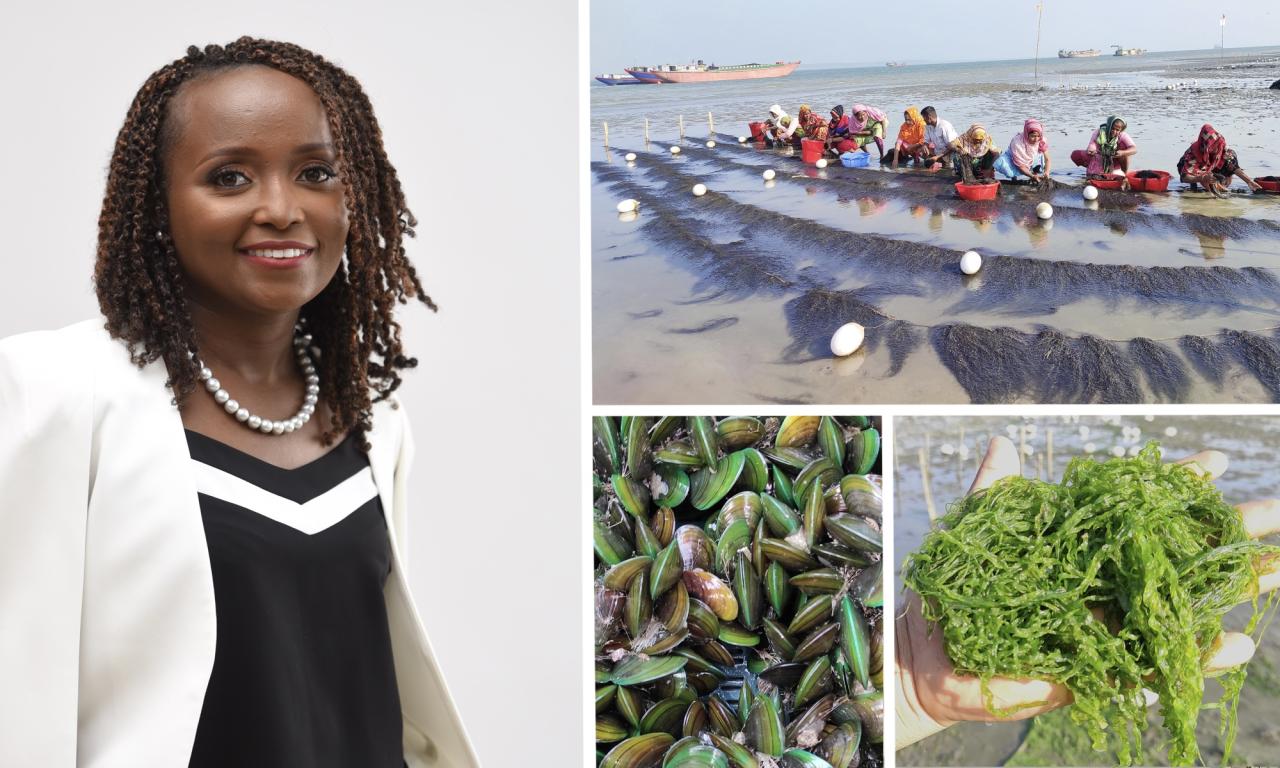
On World Nutrition day we spotlight aquatic foods and their overlooked potential to fight malnutrition. Despite being rich in critical nutrients and accessible to millions, they are often left out of policy and program decisions. in this interview, Wanjiku Gichohi, WorldFish Senior Scientist and Nutrition Impact Area Lead, explains why that needs to change and how WorldFish is helping push that shift.
What is the Current State of Global Malnutrition and How Can Aquatic Foods Help Address It?
According to The State of Food Security and Nutrition in the World report released in 2022, between 690 and 780 million people are undernourished worldwide. The majority of these people are in low and middle-income countries in Africa and Asia. Stunting is very high across these regions, with the highest absolute numbers in Asia and the highest proportions in Africa. In small island developing states such as Timor Leste and the Solomon Islands, stunting prevalence can be as high as 40%. These regions also experience the triple burden of malnutrition: undernutrition, overweight and obesity, and micronutrient deficiencies, particularly iron, zinc, calcium, and vitamin D.
Aquatic foods are crucial as they are often acceptable, affordable, and accessible forms of nutrition. They provide not only energy and protein but also essential nutrients that are lacking in these populations. Therefore, aquatic foods have the potential to significantly improve the nutrition of vulnerable groups, especially children and women of reproductive age.
Why are Aquatic Foods so often Overlooked in Strategies to Combat Malnutrition?
Aquatic foods are often overlooked for two main reasons. First, they are frequently categorized simply as "fish," which fails to capture the full diversity of aquatic foods, including sea plants, mollusks, and crustaceans. This broad categorization ignores the varied nutritional contributions these foods can make. Second, aquatic foods are typically considered only for their energy and protein contributions, which overshadows their vital role in providing essential micronutrients like vitamin A, zinc, and vitamin B12, which are crucial for public health, growth, and cognitive development.
How is WorldFish Tackling these Challenges Through its Nutrition Work?
WorldFish addresses these challenges through a range of activities. We conduct empirical research to understand what aquatic foods are consumed, by whom, and in what forms. This helps target interventions more effectively. We also engage in product development to increase the consumption and acceptability of aquatic foods, especially in urbanizing populations and research ways to reduce loss and waste in aquatic food systems to ensure more efficient utilization of caught fish. We also engage in political discourse and provide research to show the importance of aquatic foods in diets and food systems. Additionally, WorldFish nutrition team collaborates in-house with our Biosciences team to develop sustainable aquaculture strategies that meet growing demand.
What Policies can help Increase the Production and Consumption of Aquatic Foods for Nutrition?
Key policies include incorporating aquatic foods into national food-based dietary guidelines to promote their importance for public health. Supporting sustainable fisheries management ensures long-term availability. Promoting sustainable aquaculture growth helps meet increasing demand. Ensuring equitable distribution and trade of aquatic foods keeps them affordable and accessible. Including aquatic foods in social safety net programs, such as school feeding programs, enhances food security and cognitive development. Finally, policies should protect the affordability of aquatic foods, especially in low-income populations, to address public health and nutrition issues effectively.
What is Your Vision for the Future of Aquatic Foods in the Fight Against Malnutrition?
My vision is that aquatic foods will be recognized for their critical role in addressing nutrition and public health. This includes sustainable management of fishery resources and aquaculture growth, making aquatic foods more accessible, and integrating them into policies and food systems. Aquatic foods should be a central component of discussions on rebuilding and enhancing food systems, particularly in urbanizing populations. Ultimately, they should be fully incorporated into policies and strategies aimed at improving global food and nutrition security.

